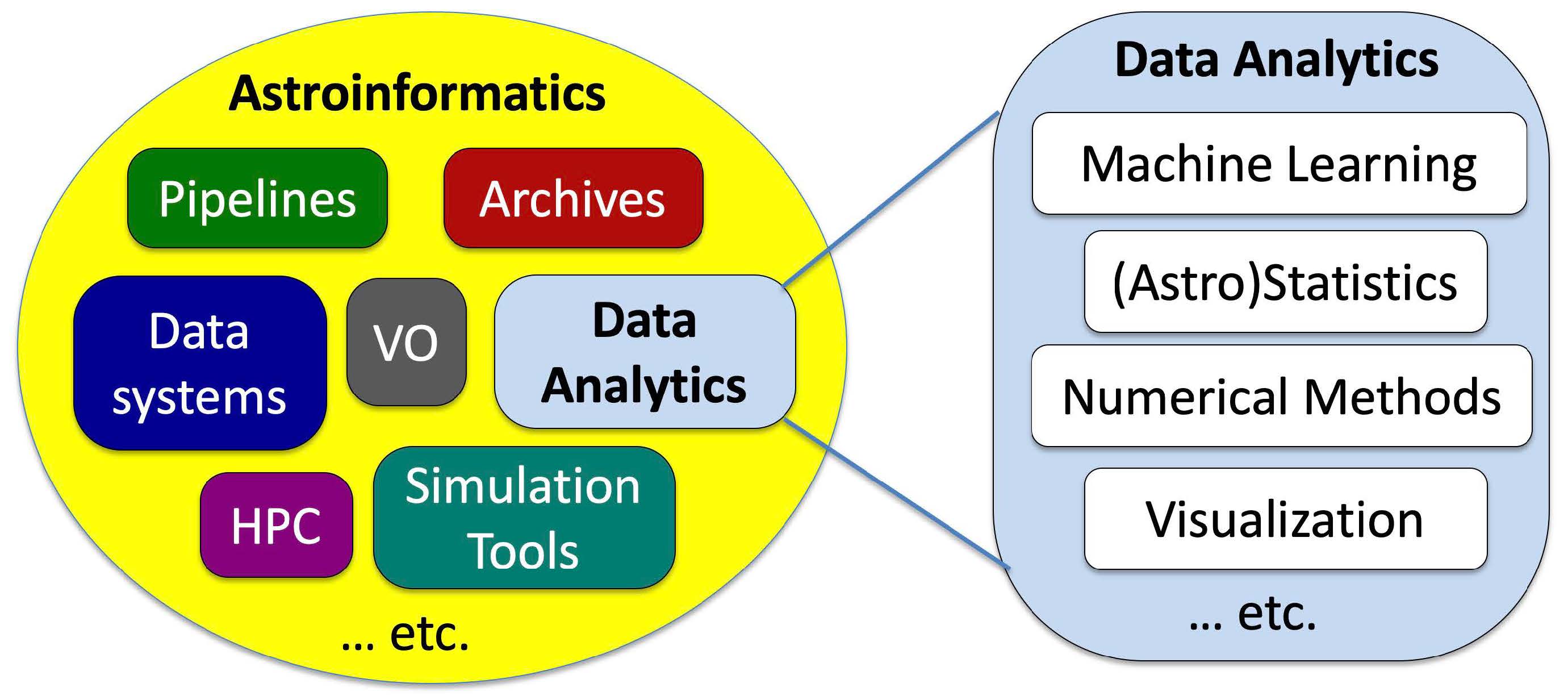Astroinformatics
What is Astroinformatics?
Astroinformatics is essentially Data Science applied in the domain of astronomical sciences (astronomy, astrophysics, cosmology, planetary science; hereafter Astronomy, for short). It is thus analogous to other “X-informatics”, where X = Bio, Geo, etc. Like Data Science in general, it is essentially a methodological discipline, based on the foundation of theoretical, experimental, and applied aspects of other fields, including various domains of Computer Science and Engineering, Statistics, etc.

[Fig 1.] Astroinformatics as the bridge field between Astronomy and Data Science.
Astroinformatics is the community’s response to the challenges and opportunities given by the exponential growth of data and computing capabilities. It is the emerging methodology for the data-intensive, computationally enabled Astronomy in the 21st century. Its origins are in the Cyberinfrastructure movement of the 2000’s [1], which in the Astronomical context resulted in the Virtual Observatory (VO) framework [2], as well as the development of the Data Science, previously known as the e-Science, Cyberscience, the Fourth Paradigm, etc. [3].
While the VO evolved into a global data grid of Astronomy [4], Astroinformatics has a much broader portfolio that in addition to the VO framework also includes the design and implementation of data systems and pipelines, data archiving functions (databases, interoperability, web services, etc.), workflows, some aspects of numerical modeling, and especially data analytics, covering the full path of Data-to-Knowledge. Data analytics, in turn, also consists of several subcomponents, including Machine Learning (ML) and other aspects of Artificial Intelligence (AI), Statistics, data visualization, numerical modeling, etc. Astroinformatics also provides a natural mechanism for the methodology transfer and exchanges with other X-informatics.

[Fig. 2] The components of Astroinformatics.
